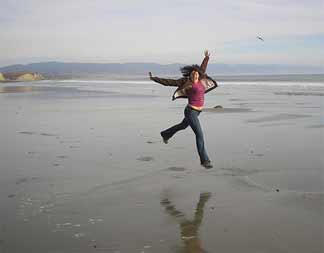The Law of OR
The chances of one event OR another event occurring
=
the sum of the chances of each event separately.
In somewhat shorter form, let's call the first event E1 and the second event E2. In this case E1 would be winning the washer-dryer, E2 would be winning the toaster. And let's abbreviate "the probability of E1" to simply P(E1). Then we can say:
 P(E1
or E2) = P(E1) + P(E2)
P(E1
or E2) = P(E1) + P(E2)
This looks a lot more official and impressive, but remember that the basic idea is, add the chances together if you want to know the probability of one thing or another thing.
What is the probability of winning any of the non-tropical-getaway prizes?
Prize | Chances |
|---|---|
Washer-dryer |
5% |
Toaster Oven |
10% |
Tropical Getaway |
1% |
Pet Rock |
84% |
(To make this problem interactive, turn on javascript!)
- I need a hint ... :
remember that P (getaway) = 1%,
P (washer-dryer) = 5%,
P (toaster) = 10%, and
P (pet rocks) = 84%
- ...another hint ... :
P (washer-dryer OR toaster oven OR petrocks)
= P (washer-dryer) + P (toaster oven) + P (petrocks)
I think I have the answer: 5% + 10% + 84% = 99%
Copyright University of Maryland, 2007
You may link to this site for educational purposes.
Please do not copy without permission
requests/questions/feedback email: mathbench@umd.edu